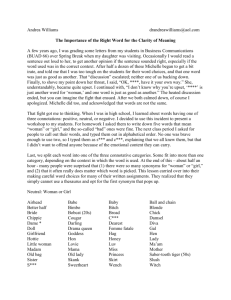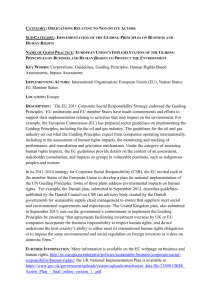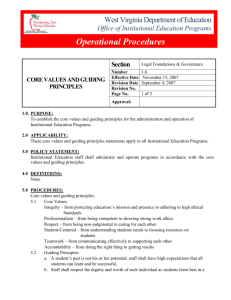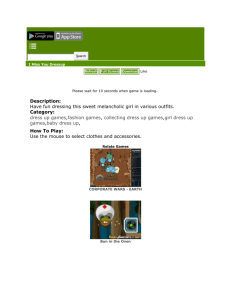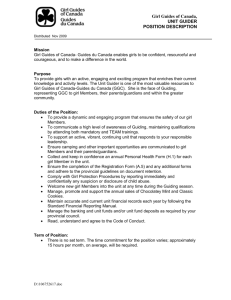1the-training-learning-process-english
advertisement
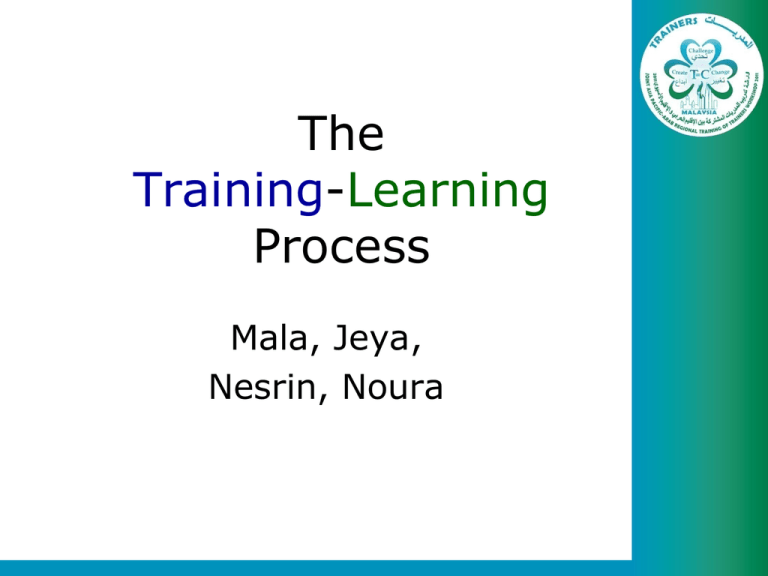
The Training-Learning Process Mala, Jeya, Nesrin, Noura Introduction In his book "Girl Guiding," Lord Baden-Powell (1918) wrote: "Our method of training is to educate from within rather than to instruct from without; to offer games and activities which, while being attractive to the girl, will seriously educate her morally, mentally and physically." COMPARISON: “TRAINING AND LEARNING” “Training is one of several responses an organization can undertake to promote learning whereas Learning is the process by which a person constructs new knowledge, skills and capabilities ” Key attributes of Learning Process in Training • Learning is an evolutionary process a product of collaboration unique to an individual equipped with intellectual & emotional elements o Progressive but not at a uniform pace o o o o How Do Adults Learn?? (Andragogy) 1. 2. 3. 4. 5. 6. 7. 8. Motivation Capacity Of Learning Experience Involvement Problem-Solving Feed backing Freedom To Make Errors Challenges How Adults Learn Knowles' assumptions on Andragogy: • The need to know • Learner self-concept. • Role of learners' experience • Readiness to learn How Do Children Learn ?? (Pedagogy) Learning Major Types Of Learning Objectives 1. EMOTIONAL (AFFECTIVE) Fostering attitude, feelings and preferences 2. PSYCHOMOTOR (PHYSICAL) Development of competence in the actual performance of procedures, operations, methods and techniques 3. INTELLECTUAL (COGNITIVE) Acquisition of information and concepts related to course content Types of Learning Attitude Knowledge Skills Factors influencing the Learning process A- Personal factors B- Environmental factors A- Personal factors 1. Desire for personal growth & development 2. Benefits for learning 3. Participants’ learning style & skills 4. Situation in organisation 5. Previous training experience of participants 6. Family situation & personal problems B-Environmental factors 1. Training strategy, methods & technique 2. Trainer \ training team 3. General learning environment in the programme 4. Relationship with other members of group & trainer 5. Composition of training group Training The Training Process PLANNING IMPLEMENTATION EVALUATION Different Training Models A Assess Design Monitor Train Different Training Models B Analysis Evaluation Implementation Design Development Different Training Models C Best Practices Integrate and Support Education Expertise Principles of Girl Guide / Girl Scout (GGGS) Training These are the principles by which all guiding and scouting units operate and are all fundamentals defined by of our founder: • The promise and law is basic to all jobs in GGGS. • Develop understanding of the relationship of GGGS movement to the community. • Makes use of cooperative endeavour. • Training for the job. • Flexible in design. • Adapts itself to the needs and abilities of the learner. • Patrol system Methods of Learning in Training Programme • Direct input by the trainers. • Learning through sharing within training group. • Through practice & exercise. • Formal & informal methods of observation. • Out of session exchanges with participants & trainers. What are the main criteria in planning an event based on guiding Principles? The main criteria in planning an event based on guiding Principles? 1234567- Objectives Trainees Training Team Methods Course Design (GGGS Principles) Training Equipments And Materials Training evaluation Training Evaluation FOCUS Participants’ reactions TOOLS TIMING Questionnaires Observation Pre-training Knowledge, Skills and Attitudes Tests Interviews During training End of training On-the Job Application Evaluation Sheets Follow up Organizational Results Checklists Reports TRAINING EVALUATION Task • Prepare a short training event that would involve the GGGS principles. • Use the guideline to plan and think of a 5 minute presentation to highlight the underlying principles used. The Training-Learning Process



